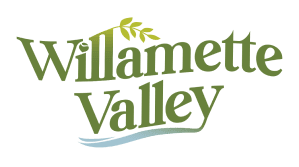Rare Butterfly a Colorful Curiosity in Willamette Valley
The Fender's blue butterfly was always there; it's just that we didn't realize it.
For decades, the delicate butterfly was thought to be extinct because its habitat-the upland prairies of the Willamette Valley-had been decimated. Endemic only to the Willamette Valley, only 1-3% of the butterfly's preferred habitat remains in the region, leaving the butterfly with few places that fulfill its biological needs. Those biological needs are no small matter: The entire existence of the Fender's blue butterfly relies on a federally threatened plant species called the Kincaid's lupine.
So when the butterfly emerges each year, visitors are given the chance to learn about both the hidden history and hopeful future of Willamette Valley wildlife-how its diverse ecosystems depend on each other, what it takes for various species to survive in the region, and how the circle of life begins anew each spring.
The story goes that the butterfly was rediscovered in 1989 by a Dallas, Oregon, science teacher who recognized the butterfly while hiking to Baskett Butte in the Baskett Slough National Wildlife Refuge. That discovery inspired an effort to support every step of the butterfly's life cycle to help ensure its long-term survival-and that means hosting plenty of lupine.
Butterfly's Life Cycle Made Possible by Willamette Valley Habitat

Between May and June, the butterfly lays its eggs on the underside of Kincaid's lupine. When the eggs hatch, they feed on the leaflets of the plant as they go through multiple instar stages before dropping to the ground between mid-June and early July. Here, the larvae essentially hibernate under the Kincaid's lupine throughout the winter before emerging in early spring and feeding on the leaflets once again. Then they pass through a few more instars before pupating and emerging as an adult butterfly.
Fender's blue butterflies have an extremely short lifespan as butterflies. In just 10 days, they must find a mate, indulge on nectar, and lay their eggs before dying. This “flight season” generally occurs between late May and early June. Good weather is critical at this stage; the butterflies won't take flight in the rain.
The population naturally fluctuates due to weather patterns and environment availability. In 1993, biologists estimated some 3,000 Fender's butterflies fluttered about the Willamette Valley. The species is believed to have peaked at 29,000 in 2016, and 2019 counts tallied 24,460 butterflies.
Currently, there are 90 sites in the Willamette Valley with Fender's blue butterflies-the only sites in the world-thanks to a collaborative effort between government agencies, non-profit organizations, and private landowners who work together to restore the habitat for the butterfly.
Many of these sites are small and located on private land, and the majority of the butterflies can be found on Baskett Butte in Baskett Slough National Wildlife Refuge.
Upland prairies love disturbance caused by animal grazing and fire. Disturbance prevents woody encroachments from trees and shrubs that produce seeds that are carried by birds and our shoes. Further, these woody encroachments shade out the native grasses and wildflowers, stunting their growth and wiping out entire prairies.
The U.S. Fish and Wildlife team, which manages the refuge, looked to the indigenous Kalapuya people for inspiration about how to restore the upland prairie environment back to its natural state. The Kalapuya set annual burns in the late summer to encourage healthy prairie habitats and keep the trees from intruding on the habitat. The fires were naturally put out by the rains of winter.
“When we removed that disturbance, the habitat suffered,” said Samantha Bartling, visitor services manager for the Willamette Valley National Wildlife Refuge Complex. “It's really about honoring what the First People did for centuries. The Kalapuya people knew what they were doing, and so we're just trying to mimic that.”
Habitat restoration includes prescribed fire burns every three to five years, mowing to mimic animal grazing, and the use of herbicides.
For their part, private landowners receive easements, and partnering organizations send private land biologists to do the same work performed in the refuges. “Private landowners have been hugely helpful for the recovery of these species,” said Bartling.
Fender's Blue Butterfly a Springtime Attraction at National Wildlife Refuges

Those who want to see the Fender's blue butterfly for themselves should plan a visit between late April and early July. As a bonus, this also happens to occur during peak wildflower season, which includes the Kincaid's lupine. The best spots to find the butterflies are along the Rich Guadagno Trail to Baskett Butte in Baskett Slough National Wildlife Refuge. There, the upland prairie is teeming with hundreds of butterflies. At William L. Finley National Wildlife Refuge, butterfly peepers can try their chances at Pigeon Butte. Follow the Beaver Pond and Cattail Pond trail entrance located off of Bruce Road, and take a right at the end of the tree line to head up the hill. The trails are open daily from dawn to dusk.
Butterfly peepers should keep an eye out for a small, one-inch butterfly. The upper wings of the males are a bright sky blue, while the females are more brown at the top. When the wings are closed, the underside of both sexes are gray or dull white with brown and black spots outlined in white.
A lot of people have never heard of the Fender's blue butterfly, so why go through all that work to protect just one species?
“It is true that in helping one species, you are automatically benefiting untold numbers of others,” says Bartling. “Managing the upland prairie reduces the threat of wildfires and the abundance of pollinator sources is crucial to the food that we eat.”








